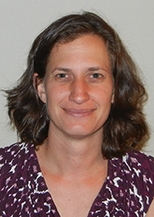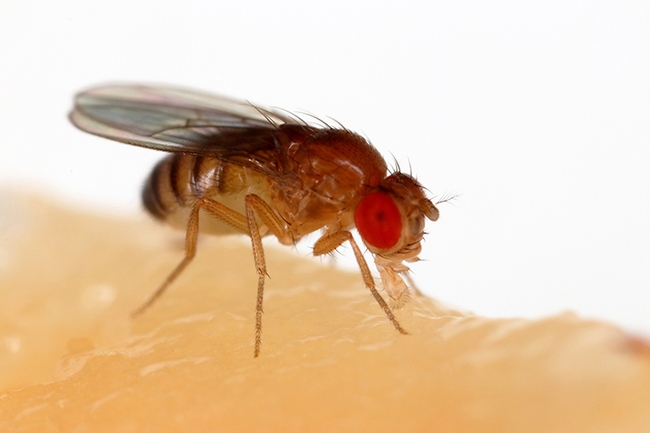
So wrote scientists Karen Menuz and Pratyajit Mohapatra in research titled "Molecular Profiling of the Drosophila Antenna Reveals Conserved Genes Underlying Olfaction in Insects," published last fall in the journal G-3 (Genes, Genomics, Genetics). "Currently, little is known about the molecules supporting odor signaling beyond the odor receptors themselves."
The research drew widespread interest. Now Menuz, an assistant professor in the Department of Physiology and Neurobiology, University of Connecticut, will head to the University of California, Davis, next week to present a seminar to the Department of Entomology and Nematology.
Menuz will speak on "Molecular Basis of Insect Olfaction" at 4:10 p.m., Wednesday, Jan. 8 in 122 Briggs Hall. Host is chemical ecologist Walter Leal, distinguished professor, Department of Molecular and Cellular Biology, and a former chair of the entomology department.
Her abstract: "Development of new insect control measures will require the discovery of novel molecular targets that can alter their olfactory capabilities. The past two decades have witnessed an explosion of research on the two insect odor receptor families, but nearly all odor receptors are poorly conserved. Therefore, my research focuses on molecules that are likely to play critical roles in olfaction in distantly related insect species. Recently, we have found that Amt/Rh ammonia transporters are essential for the sensing of ammonia, an odor released by humans and attractive to insect vectors of disease and other insects. These transporters are highly conserved and are expressed in the antennal transcriptomes of all insect species examined. To identify additional genes that may contribute to olfaction in the periphery, we carried out a computational screen in Drosophila to reveal genes whose expression in the antenna is greatly enriched compared to other tissues. Importantly, we found that most orthologs of the olfaction-candidate genes are expressed in the antennae of other species, including mosquitoes, ants, bees, and beetles. These candidates will provide a foundation for future studies investigating conserved mechanisms of odor signaling."
Menuz holds a bachelor's degree in genetics, cellular and developmental biology and a bachelor's degree in biophysical chemistry, magna cum laude, from Dartmouth College (1999), Hanover, N.H. She received her doctorate in neuroscience from the University of California, San Francisco, in 2007, working with advisor Roger Nicoll. Her thesis:"In Vivo Regulation of AMPA receptors by Their TARP Auxiliary Subunits."
Community ecologist Rachel Vannette, assistant professor, is coordinating the department's seminars. All seminars begin at 4:10 p.m. on Wednesday in 122 Briggs Hall.
Other seminar speakers scheduled for the month of January include:
Wednesday, Jan. 15
Corrie Moreau, Cornell University, Ithaca, N.Y.
Topic: "Piecing Together the Puzzle to Understand the Evolution of the Ants"
Host: Marshall McMunn, graduate student
Wednesday, Jan. 22
Sebastian Eves-van den Akker, University of Cambridge, UK
Topic: Nematology (to be announced)
Host: Shahid Siddique, assistant professor
Wednesday, Jan. 29
Elizabeth Crone, Tufts University, Medford, Mass.
Topic: Plant-insect interactions (to be announced)
Hosts: Neal Williams, professor; Rachel Vannette, assistant professor
Attached Images:
